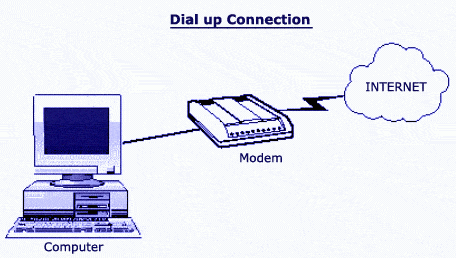Ah, the unmistakable sound of a dial-up modem connecting to the internet—it’s a tune that many of us, especially those who lived through the early days of the web, can still hum from memory. Dial-up lines were once the gateways to the World Wide Web, bustling chat rooms, and email inboxes. While most people today enjoy high-speed internet, let’s take a walk down memory lane to better understand the significance of dial-up lines and how they laid the groundwork for today’s connected world.
Jump to:
- What is Dial-Up Line?
- Why Dial-Up Lines Were Significant
- The Technological Landscape Then and Now
- The Shift to Modern Connectivity
- Conclusion: The Dial-Up Days Are Over, But Not Forgotten
1. What is a Dial-Up Line?
Dial-up lines were the stepping stones to our first internet experiences, primarily facilitated through modems that connected computers to the internet via telephone lines. Ah yes, the landline—a relic in today’s mobile-first world. Dial-up was quite literally a dial-up service; you dialed a number to get connected, and voila! You were online (after some screeching and crackling noises, of course).

Core Functions
Dial-up lines were versatile, providing not only internet access but also supporting fax and voice services. All you needed was a computer, a modem, and a regular telephone line to get started. They were the Swiss Army knives of their time, allowing for various low-bandwidth tasks like sending emails, browsing text-heavy web pages, and downloading small files—albeit slowly.
2. Why Dial-Up Lines Were Significant
The Democratization of Internet Access
Dial-up was like the public bus of the internet world—anyone with a phone line could hop on. This democratization allowed a broad range of people to get online without needing specialized hardware or services.
Limitations and Charm
Charm, you ask? Well, yes! There was something oddly satisfying about the simplicity of it all. Limitations included low bandwidth and slower speeds, but these same constraints led to unique, text-based internet cultures, like early chat rooms and ASCII art.
3. The Technological Landscape Then and Now
From Dial-Up to Broadband
The transformation from dial-up lines to broadband internet wasn’t just an upgrade; it was a paradigm shift. Dial-up relied heavily on the Analog Modem to convert digital signals from your computer into analog signals that could traverse the telephone lines. The receiving end would then convert them back into digital form. This method, while innovative at the time, was painfully slow. When broadband came along, it brought along faster and more efficient ways of transmitting data.
DSL and Cable Modems
As broadband became more accessible, technologies like DSL (Digital Subscriber Line) and cable modems offered a much-needed speed boost. These technologies didn’t require a dial-up process; they provided an ‘always-on’ connection, a significant step up from the constraints of dial-up lines.
Fiber Optics and Beyond
Fiber-optic internet represents another giant leap forward, offering speeds that make DSL look pedestrian in comparison. Unlike traditional copper lines, fiber-optic cables transmit data as light signals, allowing for faster data transfer and less signal degradation over long distances.
Current Internet Technologies
We’ve come a long way since the days of dial-up, and the options for internet connectivity are more diverse than ever. Internet Service Providers now offer a variety of solutions, from satellite internet to 5G mobile networks, fulfilling the increasing demand for speed and reliability.
4. The Shift to Modern Connectivity
Economics of Bandwidth and Speed
When we talk about the shift from dial-up to modern internet technologies, it’s important to consider the economic angle. Dial-up was less expensive in its heyday, but it was not cost-effective for telcos or consumers in the long run, especially as demands for bandwidth grew.
The Rise of Streaming and Real-Time Communication
Real-time communication and streaming services like Netflix, YouTube, and video conferencing platforms could never have thrived on dial-up connections. The bandwidth simply wouldn’t be sufficient. These services were only made possible with the advent of broadband and other high-speed technologies.
A New Dawn: IoT and 5G
The Internet of Things (IoT) and 5G are the newest kids on the technology block. IoT requires constant and robust internet connections for devices to communicate effectively, something that would be impossible on a dial-up connection. Likewise, 5G aims to provide unprecedented speeds and low latency, enabling use-cases like real-time augmented reality and autonomous driving, which dial-up could never support.
The Ever-Increasing Demand for Speed and Reliability
As our digital lives continue to evolve, the demand for high-speed, reliable internet grows exponentially. Whether it’s for massive data transfers, cloud computing, or real-time gaming, our modern lifestyles require a level of connectivity that dial-up lines could never offer.
5. Conclusion: The Dial-Up Days Are Over, But Not Forgotten
Dial-up lines were the heralds of a connected age. They introduced many of us to the joys and frustrations of the internet. Although they’ve been replaced by far superior technologies, their impact and the nostalgia they elicit make them a significant chapter in the history of the internet. Here’s to dial-up—the scratchy, screechy soundtrack of a pioneering era.